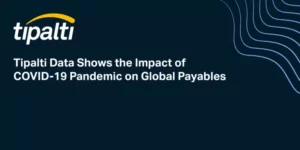Marketplace Economy 101
After COVID-19 pushed us into a stay-at-home experience, the marketplace economy has become an expanding necessity.
This marketplace moves at a breakneck pace—carelessly fast and dangerous. Companies jump into the rat race quickly, then crash and burn. Even so, the marketplace economy is set to total $5.5 trillion by the end of 2022.
So how does the online marketplace economy prevail in such a chaotic environment? How did Amazon go from being a Seattle-based online book company to a lifeline for shoppers worldwide? How did Etsy go from an arts and crafts website to dominating the marketplace? To figure out all that and more, let’s go on a tour of this industry empire.
The 101
eCommerce is the economic system in which the market interacts with customers online—exchanging goods and services. It’s not just a resource for small and large businesses; it allows brands to engage with customers. Social engagement was a business’s best resource during the pandemic, allowing brands to grow and evolve when the market was shadowed by uncertainty.
How It Began
To many peoples’ surprise, this industry sprouted well before the 21st century. The first eCommerce company, Compuserve, launched in 1969, and a decade later, Michael Aldrich invented electronic shopping. In 1982, Boston Computer Exchange—the first eCommerce software—launched its used computer shop online.
When the worldwide web became commonplace in the mid to late 90s, eCommerce was more than ready to take a ride down the information superhighway.
Exploring the Amazon
Like it or not, Amazon is the marketplace economy’s golden child. Not only does it sell nearly everything—need the bulk version of Taco Bell hot sauce? Check. A matching caterpillar Halloween costume for your Dachshund? Amazon has those too. A yodeling pickle? Of course!
Even during a recession, Amazon is near and dear to many people’s hearts. Why? It is affordable and reliable. Major eCommerce retailers stay relevant by being on trend in shopping and tech. Amazon accomplished this by being an online bookshop and growing into the dynasty we know today. They sell products at affordable prices and are constantly expanding and diversifying their offerings. They created Amazon Prime, acquired newer companies—such as Whole Foods, Audible, and most recently, One Medical—and dared to experiment. They knew that sticking to a single product or category wasn’t what the world was looking for anymore, so Amazon gave them what they wanted and needed.
Even with the occasional negative news story, companies like Amazon and eBay have loyal customer followings. So, how do they stay on top, and who is following in their footsteps? The visionaries who dare to take risks, accept mistakes, and continue to look forward.
Pioneering the Future
The rising eBays of the world conquer the market by having their thumbs on the pulse of marketplace trends and by providing exclusive services to consumers. They make their unique products accessible and convenient and are flexible when adapting and innovating. Not only do they mold into whatever economic climate they’re in, but they also manage to stay relevant in a fast-moving and ever-changing market.
More and more companies are jumping to the front of the line with unique services. eCommerce harnesses shopping therapy to a literal significance.
ClassPass is one such trailblazer. The health club aggregator partners with thousands of clubs worldwide so that customers can sign up and hop in any class at any time. Holistic and innovative companies like ClassPass are pushing the envelope on what is to come in the marketplace future.
eCommerce Giants Modernize Their Payables Relationships
The movers and shakers of eCommerce companies nurture their vendors by installing modern technology. After all, to stay relevant, the best rule of thumb is to modernize your tech stack.
The right technology encourages vendors to stick with partners who guarantee they’re paid quickly and efficiently. A self-service, self-onboarding solution provides vendors with a seamless payment experience, visibility into their payment history, and transparency in payment processes.
Technology that automatically pays vendors ensures they will work with your business. As we see the marketplace economy grow and scale infinitely, high-velocity businesses prioritize modern finance functions. In this ever-growing landscape, marketplace finance team members are the main priority of their business. Simple, quick, and efficient payments help keep the marketplace going.
The Marketplace Is a Fun Place
Before the internet, people shopped using mail-order catalogs and receiving their packages in the mail. Rural homes received the Sears Roebuck catalog in 1888 by sending the order via mail, standing beside their mailboxes, and eagerly anticipating their petticoat fabrics to arrive.
We have come a long way in the past 100+ years. You can shop ’til you drop 24/7, but much like those who lived on the prairie front, we still get an adrenaline rush when we have a special package en route to our mailboxes. That’s the magic that the marketplace economy holds—full access to “treating yo’self” with whatever we want, whenever we want.
Deliver Effortless Partner Payments
for the Creator Economy




